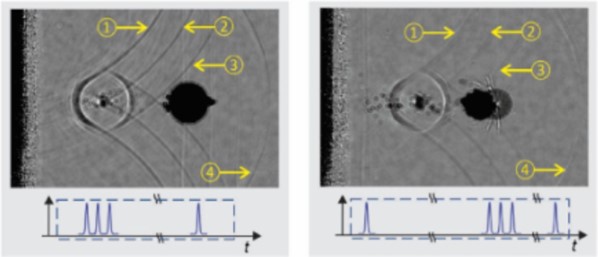Researchers from the FOLAS laboratory (Laboratory for Photonics and Laser Systems) in collaboration with researchers from the LNMS laboratory (Laboratory for Numerical Modeling and Simulation in Mechanics) have published the results of a study in the journal Ultrasonics Sonochemistry (IF=9,336) in which, by comparing experimental results and simulations they confirmed the hypothesis about the mechanisms that cause the formation of secondary cavitation in the case of laser-induced shock waves in a liquid, for the case of curved geometry.
Secondary cavitation is a phenomenon where the shock wave which is created by the primary laser-induced cavitation causes the formation of secondary cavitation bubbles elsewhere in the liquid. The results are important in the planning of laser surgery in the eye, as well as in industrial and other applications in liquids when the shock wave is reflected from a curved surface.

In the research, they showed and confirmed that the formation of the secondary cavitation caused in this way is significantly influenced by the previous illumination of the liquid, as well as by the second and multiple transitions of the shock wave after the collapse of the original bubble.
The experimental results are based on the principle of multiple exposure “on demand”, which enables imaging of the considered volume with a sequence of an arbitrary number of illumination pulses with an arbitrary and individually adjustable delay between individual pulses.
Link to the article: https://doi.org/10.1016/j.ultsonch.2022.106160